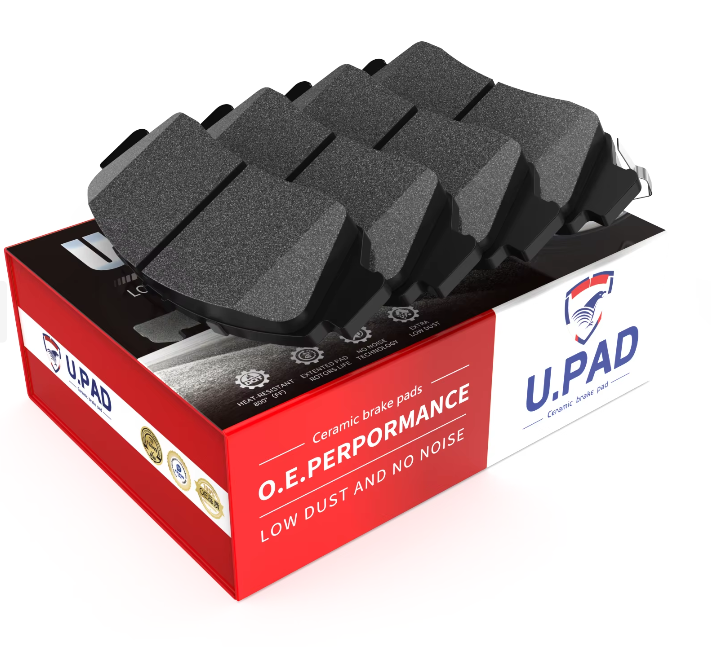Understanding the Impact of Noisy Brake Pads on Vehicle Safety
When your vehicle starts making unusual sounds during braking, it's more than just an annoyance – it's often a warning sign that requires immediate attention. Brake pad noise can range from minor squeaks to concerning grinding sounds, each indicating different potential issues with your vehicle's braking system. Understanding these sounds and their causes is crucial for maintaining your vehicle's safety and preventing costly repairs.
Modern vehicles rely heavily on efficient braking systems, with brake pads being a critical component that directly affects stopping power. When brake pad noise occurs, it can significantly impact your driving confidence and safety on the road. Let's explore the various aspects of brake pad noise and learn how to effectively address and prevent these issues.

Common Types of Brake Pad Sounds and Their Causes
High-Pitched Squealing and Squeaking
One of the most common types of brake pad noise is a high-pitched squeal or squeak. This sound typically occurs when the brake pad wear indicator – a small metal tab attached to the brake pad – makes contact with the rotor. This deliberate design feature serves as an early warning system, alerting drivers that their brake pads are wearing thin and need replacement.
Sometimes, brake pad noise in the form of squealing can also occur due to environmental factors. Morning dew, rain, or high humidity can create a thin layer of rust on the rotors, causing temporary squeaking that usually disappears after a few brake applications. However, persistent squealing should never be ignored as it could indicate more serious issues.
Grinding and Metal-on-Metal Sounds
A grinding noise is perhaps the most serious type of brake pad noise and requires immediate attention. This sound often indicates that the brake pads have worn completely through, causing metal-on-metal contact between the brake caliper and the rotor. This situation not only compromises your vehicle's braking ability but can also lead to expensive damage to other brake system components.
In some cases, grinding sounds may also result from debris caught between the brake pad and rotor, or from brake pads that have become contaminated with road grime or brake dust. Regular inspection and cleaning of your braking system can help prevent these issues from occurring.
Professional Solutions for Brake Pad Noise Resolution
Proper Installation and Maintenance Techniques
Professional mechanics employ specific techniques to minimize brake pad noise during installation. This includes proper cleaning of all contact surfaces, applying brake lubricant in designated areas, and ensuring correct torque specifications when tightening components. These steps help prevent vibration-induced noise and ensure optimal brake pad performance.
Regular maintenance should include inspection of brake hardware, including clips, shims, and anti-rattle devices. These components play a crucial role in keeping brake pads properly aligned and reducing unwanted movement that can cause noise. Replacing worn or damaged hardware during brake service can significantly reduce the likelihood of brake pad noise development.
Quality Component Selection
Choosing high-quality brake components is essential for preventing brake pad noise. Premium brake pads often include features like chamfered edges and slot designs that help reduce noise-causing vibrations. While these components may cost more initially, they typically provide better performance and longer service life with less noise-related issues.
When selecting replacement brake pads, consider factors such as your driving style, typical driving conditions, and vehicle specifications. Some vehicles may benefit from ceramic brake pads, which generally produce less noise than semi-metallic alternatives, while others may require specific formulations for optimal performance.
Preventive Measures for Long-Term Brake Pad Health
Regular Inspection and Cleaning Protocols
Implementing a regular inspection schedule is crucial for maintaining quiet, effective brake operation. Visual checks should include examining pad thickness, rotor condition, and ensuring all hardware is secure and properly positioned. Regular cleaning of brake components can prevent the accumulation of brake dust and debris that may contribute to noise issues.
Brake system cleaning should be performed using appropriate brake cleaner products and following manufacturer guidelines. Special attention should be paid to cleaning the contact points between pads and hardware, as well as the rotor surfaces. This maintenance routine can significantly extend brake pad life and reduce the likelihood of noise development.
Driving Habits That Promote Brake Longevity
Your driving habits directly impact brake pad wear and noise production. Avoiding aggressive braking, maintaining safe following distances, and anticipating stops can help reduce brake wear and prevent excessive heat buildup that may lead to noise issues. In heavy traffic, practice smooth, gradual braking instead of sudden stops.
Additionally, regular vehicle maintenance beyond just the brake system can contribute to optimal brake performance. Maintaining proper tire pressure, wheel alignment, and suspension components helps ensure even brake pad wear and reduces the likelihood of noise-causing vibrations.
Modern Technology and Future Developments in Brake Systems
Advanced Materials and Design Innovations
The automotive industry continues to develop new materials and designs to combat brake pad noise. Manufacturers are experimenting with composite materials that offer improved noise characteristics while maintaining high performance standards. These innovations include new friction formulations and pad designs that specifically target noise reduction.
Recent developments in brake pad technology also focus on environmental concerns, with new eco-friendly materials being tested that promise quieter operation while reducing brake dust emissions. These advancements represent the future of brake system design, offering improved performance with reduced environmental impact.
Electronic Monitoring and Diagnostic Systems
Modern vehicles increasingly incorporate electronic brake pad monitoring systems that can alert drivers to wear conditions before noise becomes an issue. These systems use sensors to measure pad thickness and can provide early warnings through the vehicle's information display, allowing for proactive maintenance.
Future developments may include more sophisticated monitoring systems that can detect potential noise issues before they become apparent, using artificial intelligence and machine learning to analyze brake system performance patterns and predict maintenance needs.
Frequently Asked Questions
How long should brake pads last before they start making noise?
Brake pad lifespan typically ranges from 30,000 to 70,000 miles, depending on driving conditions and habits. However, brake pad noise can occur at any time if contamination or improper installation issues arise. Regular inspections every 12,000 miles can help prevent unexpected noise problems.
Can weather conditions affect brake pad noise?
Yes, weather conditions can significantly impact brake pad noise. High humidity, rain, or morning dew can cause temporary squeaking due to surface rust formation on rotors. These sounds typically disappear after a few brake applications once the surface rust is cleared away.
Are ceramic brake pads quieter than metallic ones?
Generally, ceramic brake pads are known to produce less noise than semi-metallic alternatives. They tend to generate less brake dust and operate more quietly across a wider temperature range. However, they may not be suitable for all vehicles or driving conditions, so consult with a professional for the best option for your specific needs.
Table of Contents
- Understanding the Impact of Noisy Brake Pads on Vehicle Safety
- Common Types of Brake Pad Sounds and Their Causes
- Professional Solutions for Brake Pad Noise Resolution
- Preventive Measures for Long-Term Brake Pad Health
- Modern Technology and Future Developments in Brake Systems
- Frequently Asked Questions

